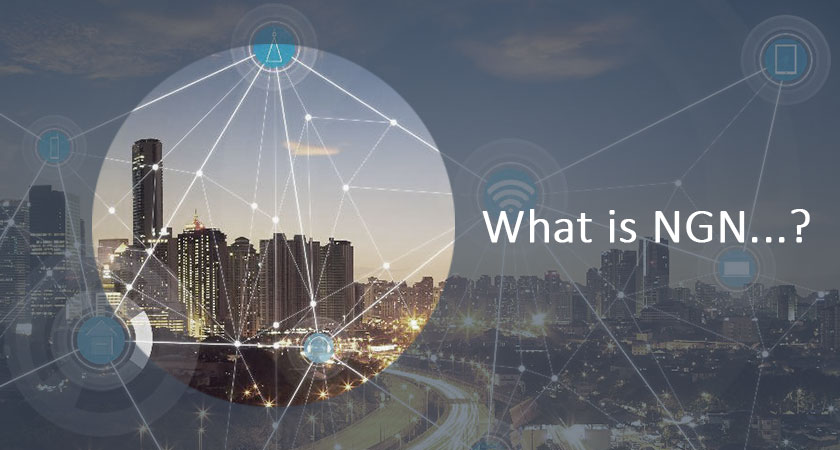The new generation of a telecommunication network is called Next Generation Network or NGN. The main reason for this naming is the existence of general changes in all aspects of service delivery, especially in the core of NGN.
NGN is a Packet-Base network that can provide telecommunication systems and value-added services.
In the past, the main structure of the landline phone was a circuit (Circuit Switch) and based on an analog signal. Although significant changes have taken place in various service areas, its general nature, based on signal transmission and a copper wire substrate, is well preserved.
At NGN, we are witnessing general changes in switching, transmission systems, etc., which has led to more freedom of action in providing fixed telephone service. The main idea of NGN is that a network can transmit all services (audio, data, and video) over the IP platform.
In a traditional telephone network (PSTN), a call center performs most of the tasks required for call support, call control, features and applications, service circuits, and line and trunk cards. But this structure is entirely different in NGN networks. In particular, the call center is divided into several separate components by standard protocols, each of which can be supplied by other vendors.
What are the benefits of implementing NGN?
Any new concept or system that enters the telecommunication networks after implementation and implementation will have positive and negative consequences. On the other hand, there are currently single-service networks that are expensive to maintain. Still, the NGN network is a single server / client-based network that offers multiple services together.
Benefits of implementing NGN
1- Increasing profitability by offering new services
• Accelerate the introduction of new services
• Providing new services through the integration of circuit and packet networks – Web-Based call management services
2- Minimize principal and maintenance investments (CAPX) and (OPEX)
• Network performance through packeting
• Integrated network management
• Maximize flexibility and scalability
• Combining and coordinating equipment and applications using open and standard interfaces
• Maintain investment
• High scalability
• Easy to introduce new technologies

Also, the main components of the NGN structure include:
1. Soft switch, which is equivalent to call control and is also called Media Gateway Controller or Call Agent.
2. Media Gateway (Media Gateway), equivalent to trunk and customer cards, includes Access Media Gateway or AMG, Wi-Fi Media Gateway or WMG, and Trunk Media Gateway or TMG.
3. Signaling Gateway
4. Media server (Media Server), which is equivalent to switch circuits
5. Application Server, which means features and applications.
NGN / IMS network services
• Free Phone service: The owner of this service is a subscriber who charges his incoming communications to advertise and gain a job market. The caller subscriber does not pay for the established communication.
The subscribers of this service are large organizations and commercial companies.
• Prepaid service: This service is owned by subscribers who have already paid for their calls by purchasing a recharge card, and the cost of calls made will be deducted from the credit of the subscriber card.
Prepaid subscribers are businessmen, soldiers, and students.
• PRM service: The owner of this service creates conditions for subscribers to contact him and get advice on specific issues.
The subscribers of this service are counselors, psychologists, and lawyers.
• VPN service: This service creates the conditions that the employees of medium and small companies can communicate with each other by dialing only four numbers without the need for full dialing and considering the geographical location.
VPN subscribers are medium and small companies.
• Voting service: This service is provided for polling on specific topics, and subscribers can express their opinions by contacting the subscriber with the service by taking a few digits.
Service subscribers: polling institutes and radio and television
• CRBT service: The subscriber of this voice service can provide a melody or music to the waiting subscriber.
• VMS service: When a subscriber is not available, it is possible to send a voice message to him.
• Onley service: This service is to optimize communication with subscribers who have multiple phone numbers. The Onley service facilitates the possibility of calling such subscribers according to the number of contact numbers. All subscriber numbers are assigned to a specific number, and the user only calls the exact subscriber number.
Service subscribers: businessmen, company managers, organizations
• NP service: The subscriber of this service does not need to change their phone numbers by changing their business’s geographical location, and this service provides facilities for the last digits to be transferred to the new site of the company.
• Web Call service: This service creates conditions for medium and small companies to communicate with each other by phone without the need for full dialing and only dialing four numbers regardless of geographical location.
• Web800 service: This service creates facilities that companies and organizations such as airline offices or even doctors, etc. by providing a unique code to ask their customers to contact them and then the operator of the organization to reach their customers to increase their market share of customers in various fields ultimately.

